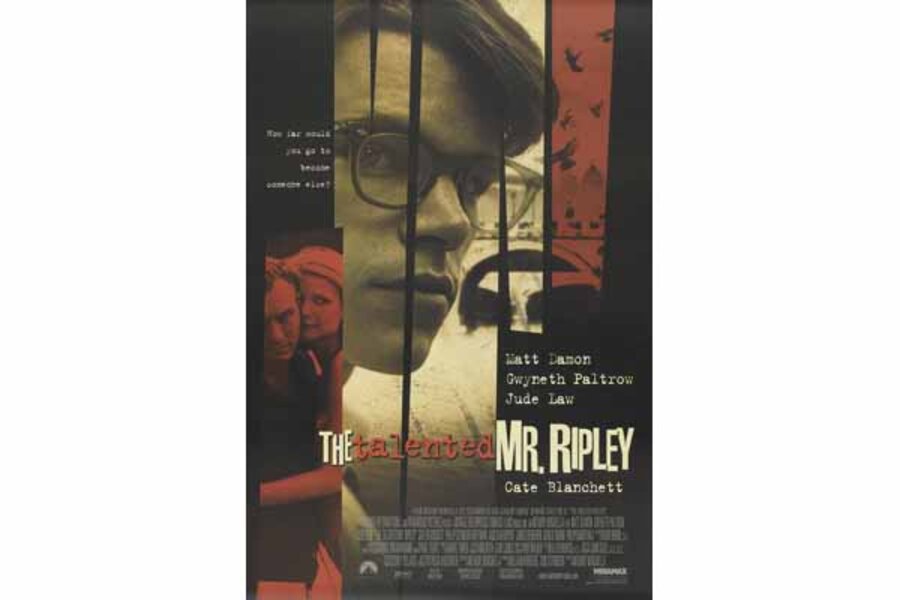Noir City: the best books behind the great noir films
A few years ago, the emcee of San Francisco's Noir City – the largest film noir festival in the country – apologized for the weather in front of an audience of hundreds.
Had it started to rain? Nope. It had just stopped pouring outside of the Castro Theatre movie palace. And that might have been enough to ruin the mood. But it was still suitably gloomy and cold outside in the night. And, of course, on the screen inside.
Film noir refers to the seductively shadowy crime movies of the 1940s and 1950s and their progeny that darken big and small screens to this day. Every January, Noir City draws thousands of fans to watch mostly obscure movies starring icons like Humphrey Bogart and Marilyn Monroe. (The festival plays well-known movies too, but focuses on undiscovered and forgotten films.)
People dress in mid-century attire, and surviving actors and actresses from the past reminisce about their days playing crooks and femmes fatales. The emcee is Eddie "Czar of Noir" Muller, a leading author of books about film noir and frequent guest on the commentaries included with DVDs of noir classics.
Many hard-boiled books became famous noir movies, including "The Maltese Falcon," "The Postman Always Rings Twice" and "Mildred Pierce" (soon to be an HBO miniseries starring Kate Winslet). Before heading to Baghdad by the Bay to attend the festival, I asked Muller about his favorite book that became a noir movie. He answered and connected me with two other mystery authors who provided their own favorites.
Here's what they all had to say.
• Eddie Muller, author of the novels "The Distance" (2002) and "Shadow Boxer" (2003): "There are several: 'The Asphalt Jungle,' 'The Maltese Falcon,' 'Thieves Like Us,' 'Nightmare Alley.' But I think my favorite is Dorothy B. Hughes' 'In a Lonely Place,' because the film is not like the book. They're two separate stories, although they share a similar plot.
"Both are good in their own right, but they are entirely different experiences. I like the book because Hughes does a great job, in 1948, of getting inside the head of a misogynistic serial killer. But I like the movie because it throws out the melodrama of a murder story and plays it as a very adult drama about how the creative impulses of an artist can destroy any chance for a 'normal' relationship."
Note: The 1950 film "In a Lonely Place" stars Humphrey Bogart and Gloria Grahame.
• Ace Atkins, author of nine crime novels, including 2010's "Infamous": He chose "The Getaway," a novel by Jim Thompson that became a Sam Peckinpah movie starring Steve McQueen in 1972. "Thompson's novel is a true road trip through hell, leading us into a broken, gritty world that few leave alive.
"Peckinpah's vision for the book – based on a treatment by Thompson and ultimately written by Walter Hill – isn't compromised. Like many great films from the 1970s, 'The Getaway' is a study in capturing the real world and real grit. The Texas border locations are shot in such great detail as bank robber Doc McCoy tries to escape a heist with the money and his life.
"This may not be the classic black-and-white you might expect in a noir, but it bleeds with what noir is all about."
• David Corbett, author of four crime novels, including 2010's "Do They Know I'm Running?": "My favorite book turned into a film noir would probably be 'The Talented Mr. Ripley,' by Patricia Highsmith. I enjoyed the movie very much, but the film can't capture what is intrinsic to the book, and what provides its essential frisson: the chilling contrast between Ripley's actions and the inner world that motivates them.
"The reason the book is superior – and why the film could not possibly compete – is that Tom Ripley's inner conception of himself reveals just another layer of fraud. There is something deeper but untouchable, unknowable about him, because it's not just his worldly persona that's self-fabricated. While being articulate and seemingly self-aware, he's in fact utterly and terrifyingly self-deluded.
"The book provides a sense of an impenetrable void at his core, which accounts for his chameleon-like (or parasitic) behavior. He only truly comes to life when assuming the persona of another, without ever fully realizing this about himself. It's far more chilling than the movie."
NOTE: "The Talented Mr. Ripley" became a 1999 movie (one of my personal favorites) starring Matt Damon, Jude Law, and Gwyneth Paltrow.
Randy Dotinga is a regular contributor to the Monitor's book site.





